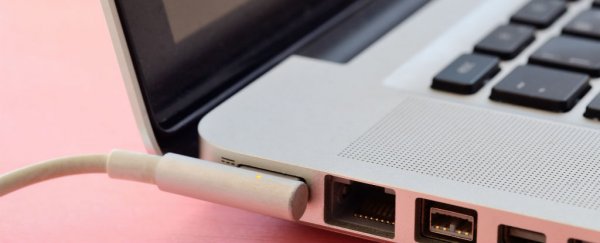Our computers and mobile devices are getting noticeably faster and more sophisticated with the passing of every year, but the same can't be said for the batteries that power them. You'd be hard-pressed to find anyone who's particularly happy about the life of their iPhone battery, and who among us can say you don't wish your laptop could stay unplugged for just a little longer between charge cycles?
The fact is it's taken more than a decade to double the performance of our batteries, and researchers at Microsoft say it's time to tackle the problem from a completely different angle - instead of trying to squeeze a bunch of conflicting properties into one battery, they're developing an entire system of batteries that combines different types of batteries for a more 'personalised' charge.
"No single battery type can deliver the ever-growing list of requirements of modern devices: fast charging, high capacity, low cost, less volume, light in weight, less heating, better longevity, and high peak discharge rates," they write in the Journal of the ACM.
"A growing range of battery chemistries are under development, each of which delivers a different set of benefits in terms of performance. We believe that combining multiple of these heterogeneous batteries instead of using a single battery chemistry can allow a mobile system to dynamically trade between their capabilities and thereby offer attractive tradeoffs."
Named the Software Defined Battery (SDB), the system would work by having the hardware control the amount of that power that passes in and out of each battery via what the team describes as "smart switching circuitry". Figuring out how much power to draw from each battery, and how to recharge each battery, lies with the SDB software that runs through the computer's operating system.
That's where the system starts to get really clever - the team proposes that this software would track how an individual uses their laptop day-to-day, so it can anticipate periods of high and low power usage. This means each battery can be optimised for the specific task it's been designed to perform by going into stand-by when it's not needed so it's fully charged and ready to go when it is.
![]() Anirudh Badam et al.
Anirudh Badam et al.
For example, if you typically just run a word processing program and Internet browser on your laptop during the day and spend the night doing something more demanding, such as video editing or gaming, the SDB would learn that during the day it needs to conserve charge on the battery in the system that's best at handling a high workload.
"The algorithms implemented by this software use various metrics for increasing the single charge-discharge duration of the device, and the longevity of the batteries, and thereby decide the ratios in which to discharge each battery, and the ratios in which to charge them," the researchers explain.
They envisage the battery system to be suited to everything from long-lived wearable devices and computer 'turbo modes' to 2-in-1 laptops with detachable keyboards, claiming the efficiency of the latter could be improved by 22 percent.
The system is just a concept at this stage, but it's an intriguing glimpse into how we might solve the rather significant problem we have with batteries right now. Because why have one battery working for you, when you can have an entire team?
